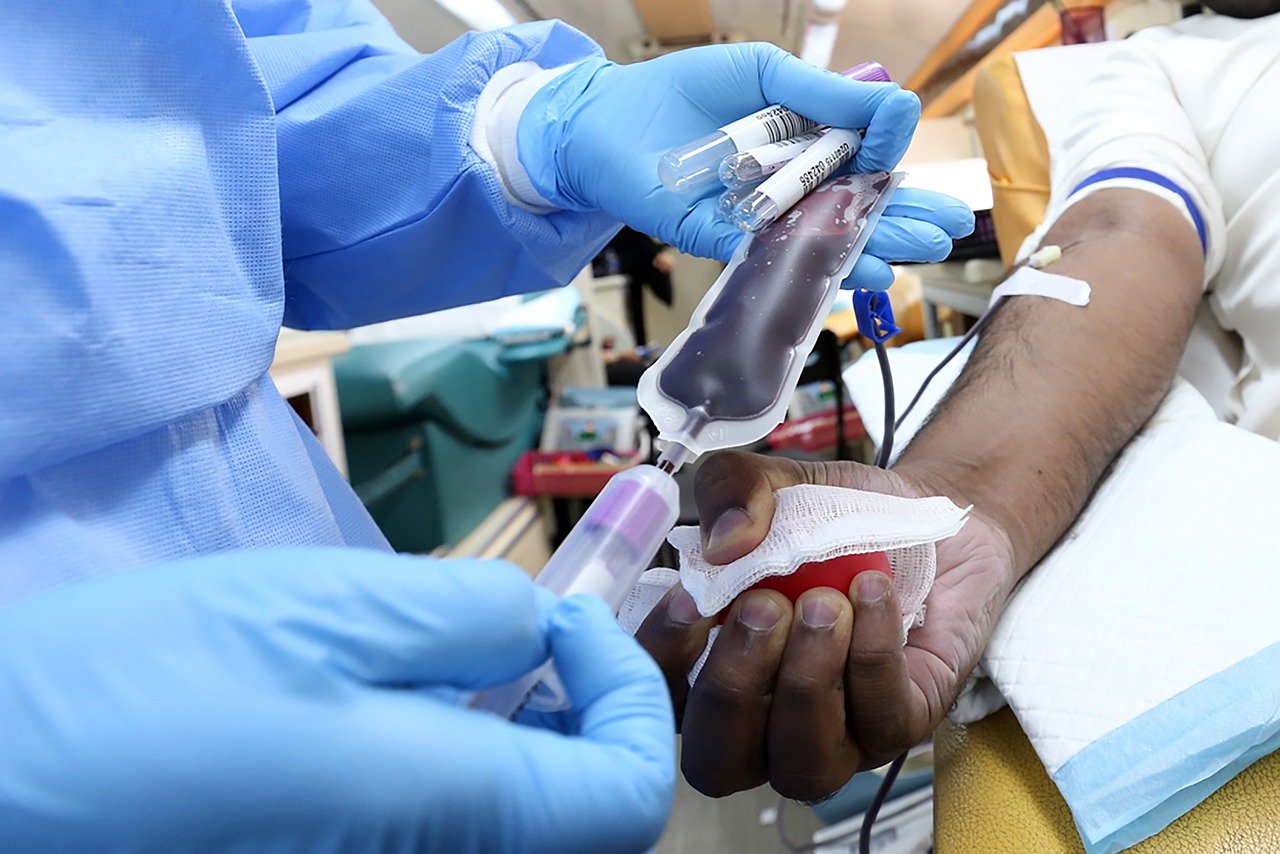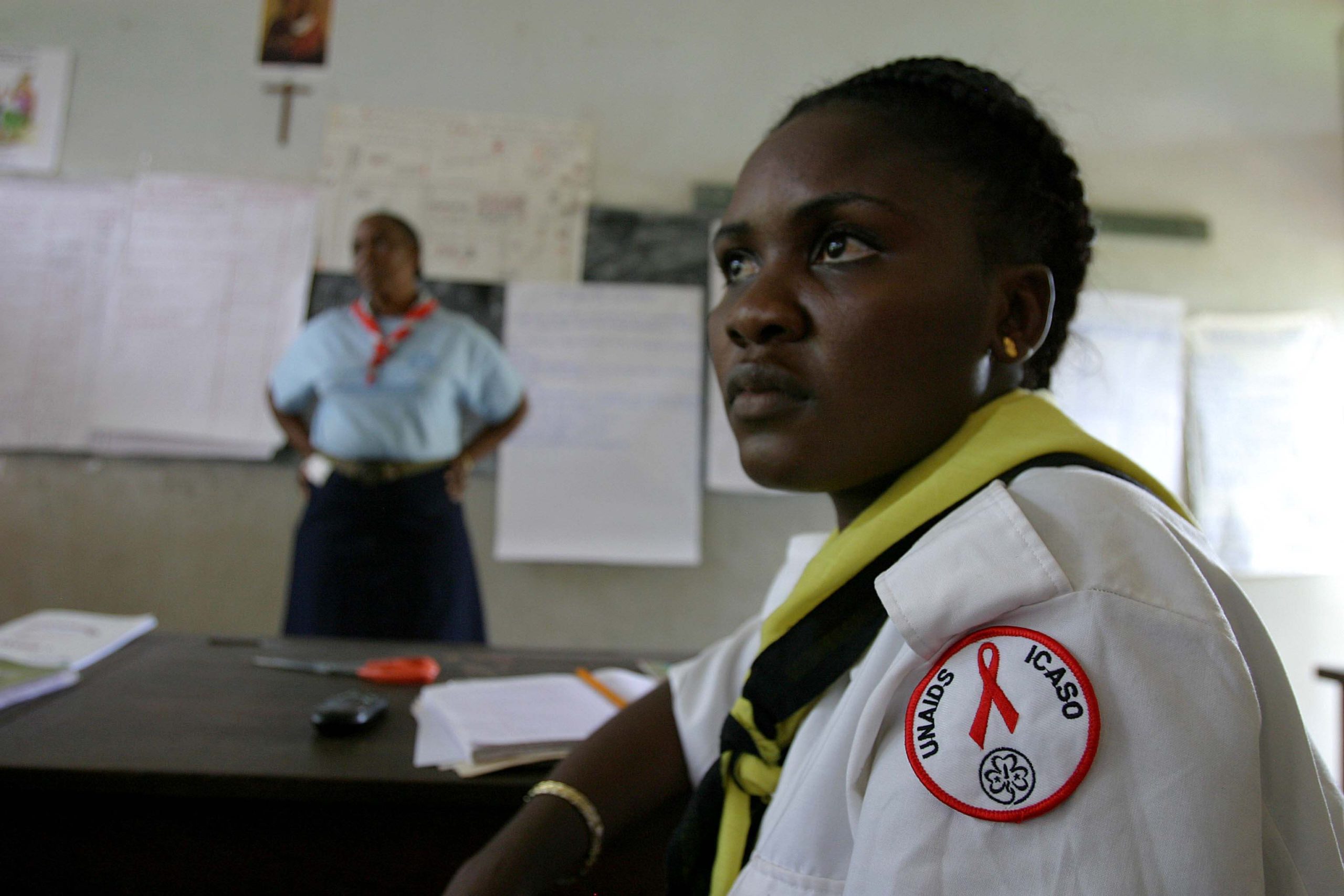The Vampire Strikes Back

By Thomas Lambert
Staff Writer
20/10/2020

Picture Credit: Will Sweet
The patrols are out again. Many go barefoot, and their faces are lit orange by torches wrapped in petrol-soaked rags. They’ve armed themselves with whatever can be skimmed from the storehouses of traditional farms: crescent sickles, flashing machetes, wooden scythes that thump the ground like the long-absent rains. Everyone is chattering, in the cocktail of languages that prevails in this particular corner of Africa: Chewa, Yao, with a smattering of English thrown in. It’s hard to make out what is being said, but one word keeps cropping up, over and over again: amampopa. “Blood-suckers.” The patrols, you see, are on the hunt for vampires.
Malawi is the vampire capital of the world. Nestled in the Great Rift Valley – a great, 3,000-mile fissure where the Horn of Africa extends into the Indian Ocean – it is home to 18 million people, with more than half living below the poverty line. For the majority of these 18 million, vampires are not confined to nightmare or fiction: they are demonstrably – dangerously – real. Rumors about bands of roving amampopa, ambushing those caught outside after dusk and growing rich off stolen blood, which they sell as an elixir or charm, spread like fire through the bush; conspiracy theories about vampires working in league with the government and various international aid organisations abound. The national sense of fear is palpable: “We fear we can have our blood sucked if we sleep alone in our houses,” said Agnes Zimba, a resident of northern Malawi. “We are even failing to go to our gardens for fear of being attacked by vampires there.”
Amampopa scares have been a feature of Malawian life, on and off, for over 20 years. But recently, they’ve reached a kind of frenzy. This March, vigilante lynch mobs killed five people in three of the country’s rural northern provinces, while in Nkhata Bay on the shores of Lake Malawi, police were forced to use tear gas to scatter a mob attacking a group of government statisticians based in the area. In August, a BBC film crew was ambushed while investigating a local purveyor of blood charms, and was only saved by the intervention of local police. But the most damaging vampire scare occurred in 2017, when a spate of vigilante murders led the United Nations to withdraw its staff from southern Malawi, and the US to suspend all Peace Corps initiatives for a whole year. Yet, despite how often this problem reappears, it remains poorly understood, and is often treated as a vehicle for the pet prejudices and projects of commentators and officials alike.
This March, vigilante lynch mobs killed five people in three of the country’s rural northern provinces.
What causes the vampire scares? The Malawian government’s line is clear: the patrols, the protests, even the lynchings, are simply a pretext for individuals to loot and pillage without social repercussions. Rumormongers are invariably criminalised (authorities arrested over 200 in 2017), but this only strengthens claims of a conspiracy and cover-up. At the same time, Western organisations have adopted an air of effortless superiority, dismissing the vampire scares as primitive and irrational, and stressing the need for “science education” to stamp out the Conradian chaos. And as with the Malawian government’s position, there is more than a grain of truth here: vampire scares predominate in Malawi’s rural north, away from metropolitan centres like Lilongwe and Blantyre, where mythology more readily comingles with medicine, and shamanism still holds sway over science. But there’s still something missing from both these accounts. Vampire panics have roots that extend deeper than mere venality and backwardness, into the region’s fraught colonial history. If we pay attention to these beliefs – if we take them seriously, not as literal testimonies, but as valuable expressions of social stresses and strains – we discover a complex internal logic, which may help illuminate a region that for many in East and West alike remains a “heart of darkness.” What’s behind these vampire scares? And what do they mean?
Any attempt to answer this question must concern itself not just with Malawi, but with the Great Rift Valley as a whole. For though Malawi is something of a hotspot for 21st-century vampire scares, the phenomenon has been truly region-wide, with Uganda, Tanzania, Mozambique, Zambia, and Kenya all recording their own outbreaks in years past. Indeed, some outlets recorded that the 2017 vampire rumors may have originated over the border from Malawi, in Mozambique or Zambia – though these things are hard to substantiate.
The first reports of vampire panics date from the 1910s and 1920s, when the whole region was under the control of European colonial powers, especially Britain. Some anthropologists have speculated that the rumors began in the wake of botched medical procedures carried out by colonial doctors during the First World War. Whatever the catalyst, this wave of hearsay triggered a raft of colonial anti-superstition legislation. In Malawi (then known as British Nyasaland), the 1911 Witchcraft Act outlawed a host of supernatural designations – not just witches but sorcerers and vampires too – believed to undermine rational colonial government. Vampire versus Empire: the battle lines were drawn.
According to historian Luise White, throughout this early colonial period, those accused of being vampires tended to belong to very specific social categories. Unlike witch-hunts, vampire panics tended to single out men, and – perhaps surprisingly – men of unusually high professional status within the colonial administration. Accusations of vampirism were levelled at game rangers in Zambia, mine managers in Zaire; but the most frequent targets were ambulance drivers, policemen, and, above all, firemen. So common were these accusations that to this day, Swahili has its own word, “wazimamoto,” meaning “blood-sucking fireman.” In Tanganyika (now Tanzania) during World War II, a blood drive gathering plasma for overseas troops failed for the sole reason that a fire engine was always stationed by the airstrip where the drive was taking place. Steeped in stories about vampiric wazimamotos, locals assumed the blood was being collected for Europeans, as a delicacy to glug down between quinine-loaded gin and tonics.

Only the most tone-deaf commentator could miss the metaphorical resonance of African colonies like Nyasaland being “bled white” by colonial suzerains. But White’s study of the wazimamotos reveals other, subtler, correspondences, which reveal the internal logic at play in the vampire panics. Common to almost all early vampire accusations, White noted, was a strange, fetishistic focus on technology and machinery, particularly contraptions involving tubes: hoses in fire engines, ventilators in hospitals, gun barrels in big-game Jeeps. Motor vehicles were also focal points: many eyewitness accounts by vampire “survivors” go into more detail about the vehicles – their paintwork, their strange, reflective windows – than about the vampires themselves.

This was not just a hysterical reaction to new technology, an instinctive revulsion at the growling motor, the rubbery cannula. It corresponded, rather, to a very precise demographic division, created by the colonial state. Firemen, ambulance drivers, police – all belonged to a tiny African elite, picked by the ruling white minority in order to keep their fellow Africans in check. Those making accusations and spreading rumors about the early vampires came not from this administrative class, but from the poorer majority, which remained engaged in traditional agriculture. Even when it didn’t bubble over into the supernatural, claims of “collaborationism” were rife: traditional farmers believed those working in the colonial state’s emergency services were “changed” by involvement with white colonisers and their machinery. Other colonial discourses contributed too: European colonisers spread Christianity throughout Sub-Saharan Africa, and the emphasis placed by the Christian Eucharist on the ritual consumption of blood was likely another reason for the rumors. (Sure enough, in present-day Malawi, vampire scares are much more common in the Christian north than in the Muslim South.)
It’s surprising, then, that when Malawi suffered its latest paroxysm of vampire scares earlier this year, so few news outlets made the link with its colonial past. In fact, there is ample evidence to suggest that the amampopa panics which afflict Malawi to this day are little more than a carry-over from the wazimamoto tradition. Eyewitness accounts from this year and 2017 confirm that the same fault-lines – haggard, oppressed traditional farmers versus the West and its African stooges – still very much apply. Perhaps the most striking new focal point for contemporary vampire scares in this regard is international aid organisations, and the native Malawians who work as their local partners on the ground. Aid organisations are obvious heirs to European colonisers, since they provide countries like Malawi with a steady stream of white, European expats who direct local infrastructure and influence local policy. It’s also easy to see why locals might form the opinion that such organisations are after blood: blood diseases like African Sleeping Sickness and more recently HIV/AIDS are the subject of major promotional campaigns, and see local Malawians submit in their thousands to blood tests administered by white Europeans. Local doctors who co-operate with these schemes are some of the mobs’ favorite targets.

Even the wazimamoto panics’ strange, fetishistic focus on new technology endures. Once again, motor vehicles are the vampires’ favoured form of transport, with an astonishing number of “survivors” claiming to have been smuggled into vans bursting with sinister, quasi-medical tubes. And now there are new fetishes: sectors like agriculture, which were mechanised only in the postcolonial era, have also found their way into the symbolism of the vampire scares. In countries like Malawi today, a significant minority of farmers supplement traditional techniques with hi-tech irrigation systems and foreign-manufactured pesticides. Sure enough, accounts from recent amampopa “survivors” in Malawi often feature the vampires sedating their victims with strange “chemical mists” redolent of industrial crop sprayers, and when rains fail, the few farmers who have managed to acquire modern irrigation equipment are often the first to be accused of vampirism. The symbolic logic is clear: with their humming machinery and strange, subterranean pipework, they have “sucked” the rain out of the sky.
There is, however, one feature of the amampopa scares that is truly new. Increasingly, the major player in the Malawian vampire conspiracies is the Malawian government itself. Vampires are portrayed as government contractors, often with day-jobs as bureaucrats in the city. Workers from Malawi’s National Statistics Office are prime targets, and have been denounced and even attacked for moonlighting as the drivers of vampiric “blood vans.” To those steeped in the Western vampire tradition – from the gothic collages of Polidori and Stoker to the glittery metrosexuals of contemporary young adult fiction – the notion of vampires as a branch of government might come as something of a surprise. We tend to think of the vampire as subversive, going against the state and legitimate order: Dracula pits the stolid, professional Englishman Jonathan Harker, fondling his law books like talismans, against that unmentionable force from the East, the Count, whose crimes and whose very existence are an affront to law and science.
Workers from Malawi’s National Statistics Office are prime targets, and have been denounced and even attacked for moonlighting as the drivers of vampiric “blood vans.”
Malawi’s vampire scares prove that today’s monsters are rather different. There is a new syncretism afoot, which began with the colonial period’s wazimamoto scares and has now become something of an orthodoxy. In the 21st century, folk belief and superstition tend to manifest in state-sponsored bogeymen. More and more often, government is in cahoots with demons and spectres, the dark, subversive forces that lurk at the margins of life. Even the century’s most iconic monster, the blood-sucking beast known as “El Chupacabra” that set Latin Americans aquiver back in the early 2000s, stems from rumors of a secret government testing facility in the steaming jungles of US-controlled Puerto Rico. Nor is this limited to governments believed to have collaborated with colonial powers. In 2016, the “Pizzagate” scandal spread across the wackier margins of US politics. What began as an allegation that various bigwigs from the Democratic National Committee and Hilary Clinton’s presidential campaign were operating a child-trafficking ring out of a Pizzeria named “Comet Ping Pong” soon became more and more outré. The rumors soon went in a supernatural direction: in December 2016, Donald Trump’s designate for National Security Advisor, Michael Flynn, suggested over Twitter that John Podesta, Clinton’s campaign manager, took part in occult, Satanic rituals involving the consumption of human blood. The amampopa, it seems, have gone global.
What does it mean for government to be in league with such creatures, to plumb the depths of nightmare? In Sub-Saharan Africa, the persistence of vampire scares shows that despite what appears like total decolonisation – despite the militaristic parades and technicolor flags – local Africans in countries like Malawi still view their governments as exploitative and alien. Even after decolonization, these people have just swapped one set of masters for another. A hierarchy of race has ossified into one of class, and despite some limited improvements in recent years, Sub-Saharan Africa’s institutions still suffer from cronyism, inefficiency, and corruption. So it’s no surprise, really, that the amampopa retain their extraordinary metaphorical power; they express at a visceral, folk level what political scientists like Daron Acemoglu and James Robinson have been saying for years: the whole political process in countries like Malawi is geared towards creating a “spoils system,” where the task of government is to extract what resources, favors and profits it can before the next transfer of power. This is the truth behind the blood-myths: Africa’s veins are still being tapped.
It’s too easy to dismiss the vampire scares as barbaric, irrational, the product of scientific illiteracy and heat-addled minds. The panics mean something: they express the frustrations and traumas of an entire region, which go back at least a century. Any solution, then, ought to lie not just in science, but in politics. So maybe we should give the supernatural its due: there are still ghosts of empire to exorcise.
